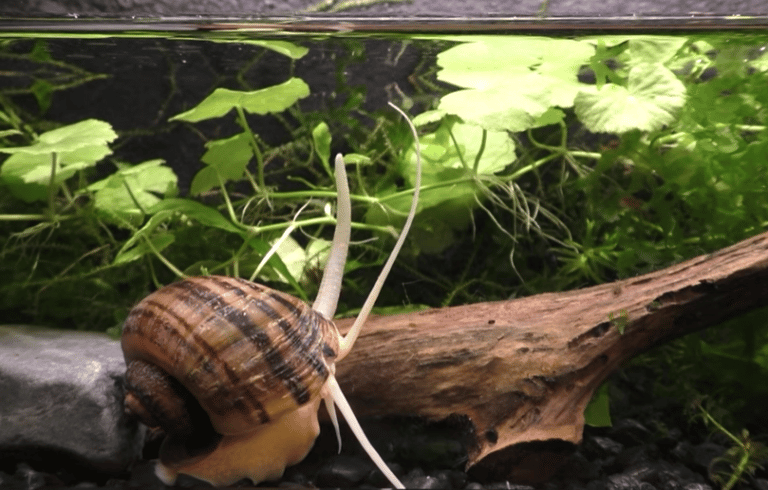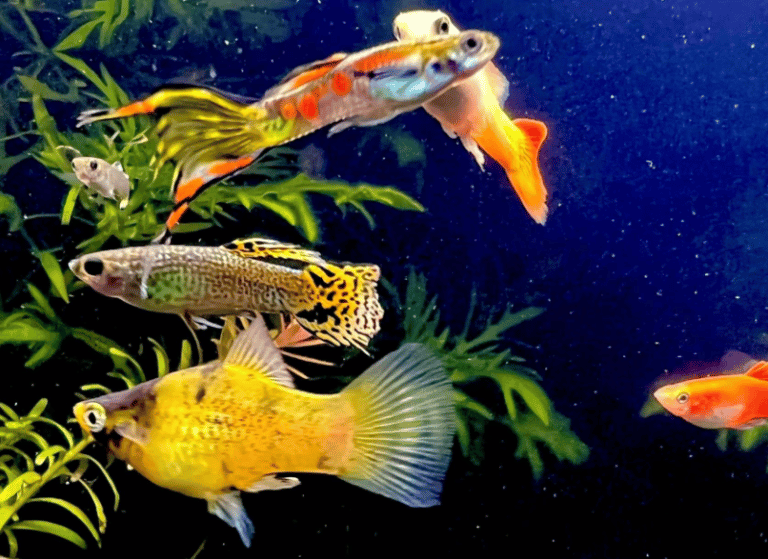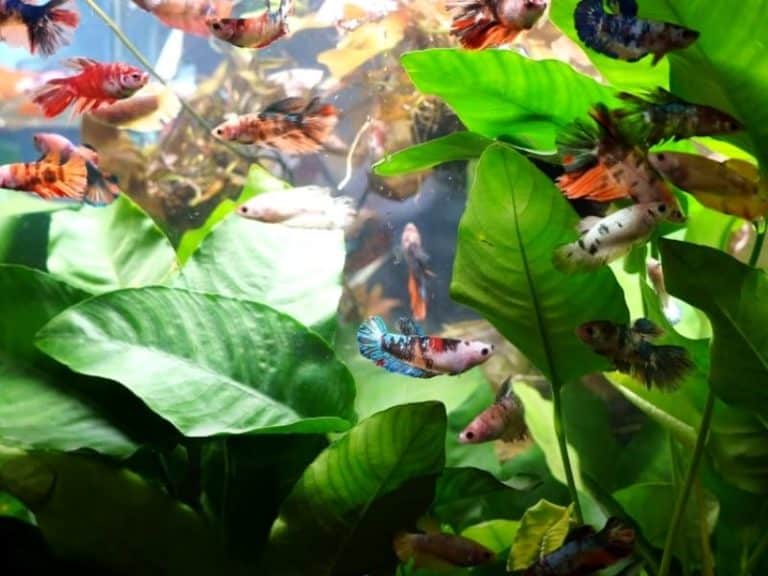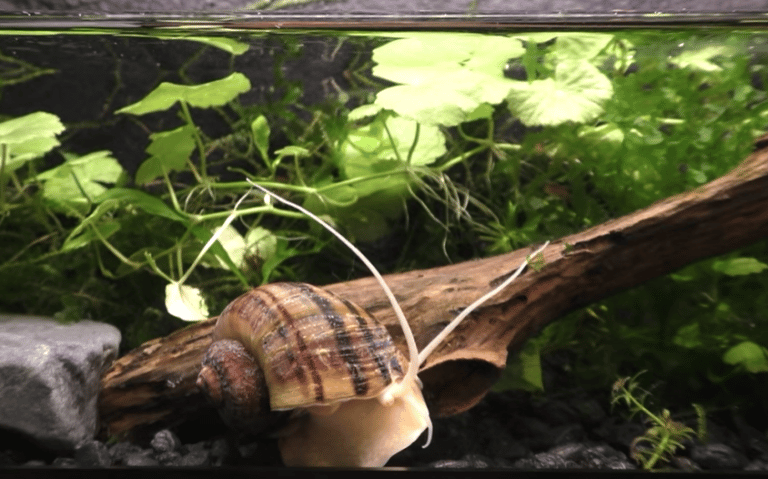Nerite snails are tiny and will grow to a 0.5 – 1 inch length. They are kept for their beautiful colors and their ability to clean the tank by feeding on algae. They are hardy and easy to keep. All they need are ideal tank conditions and food.
So, how many Nerite snails do you need to keep per gallon?
Although relatively small, nerite snails have a voracious appetite for algae. If you keep several of them in a small tank, they are likely to eat all the algae and starve. Your best bet is to keep one Nerite snail per 5-gallon of water.
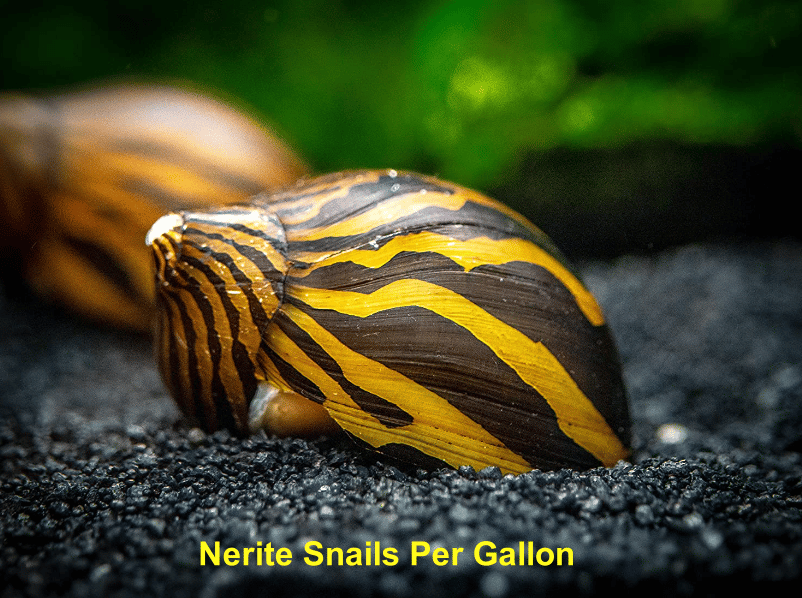
Ideal tank requirements for nerite snails
The lifespan of a nerite snail typically depends on prevailing conditions in the tank. In the wild, they can live up to 3 years. With proper tank conditions, they can live much longer. However, some breeds of nerite snails are said to live for less than two years.
Nerite snails are found along the coastline of the Indian, Pacific, and Atlantic oceans. They will migrate to salt, brackish, and freshwater as they feed, grow, and reproduce. Therefore, mimicking their natural habitat as much as possible is vital.
Below are the ideal conditions for nerite snails:
1. Temperature
Nerite snails love to live in a tropical tank environment, but they can also live in a cold water tank as long as the temperature does not fall below 65 degrees Fahrenheit.
Therefore, you will need a heater for your tank for them to live a long, happy life. Ensure it does not get hot by checking with a thermometer. A temperature of between 72 – 78 degrees Fahrenheit is ideal.
2. Water hardness
All snails prefer hard water for the proper growth of their shells. Hard water contains minerals like calcium and magnesium that are essential for snails. Keeping a nerite snail in soft water will cause its shell to erode and its general health to deteriorate.
The appropriate water hardness for nerites is 7 – 8.5. If you keep the snail in a community tank with soft water, you can add limestone, crushed coral, or marble chips to increase its hardness.
3. Water type
Nerite snails can live in fresh and saltwater but need brackish water to breed successfully. They can lay eggs in freshwater, but the larvae will succumb as soon as it is hatched.
If you intend to breed your nerite snails, you must have a brackish water tank where you move them to breed. However, if you do not need them to breed, keeping them in freshwater will prevent reproduction.
4. Diet requirements
Nerite snails are herbivorous and mainly feed on algae. Keeping them in a small tank with little algae or other algae-eating invertebrates or fish will result in them starving. If the algae are insufficient, you can feed them alternative food such as algae wafers.
5. Light requirements
Nerite snails like light but are sensitive to very bright light. The snail will dry out when exposed to direct sunlight for extended periods, so you should use moderate lighting.
Instead of keeping the tank in direct sunlight to encourage algae bloom, add rocks to the tank for the same purpose.
6. Tank Size
Nerite snails need spacious tanks to thrive. In small spaces, they can starve or get stressed and die. As you know, they feed excessively on algae. You should keep only one Nertie snail for every 5 gallons of water you have. This means, if you have 10 gallons, keep only two snails.
7. Chemical presence
Nerite snails are susceptible to chemicals such as copper, which is toxic to invertebrates. Although they might not die immediately, consistent exposure to copper will cause their health to deteriorate. They will become inactive and die shortly afterward.
Copper can be introduced into the tank by tap water, plant fertilizer, decorations, stones, and bacteria treatment. You can use a poly filter to remove copper from the water.
Ammonia, nitrite, and nitrate are also harmful to nerite snails. They are produced by decaying plant matter, fish waste, and leftover food. You must have a test kit to check them. Ammonia and nitrite levels should be zero, while nitrate should be below 20 ppm.
Favorite nerite snail tank mates
Adding nerite snails to a community tank will make it even more appealing. They have very beautiful colors and patterns. They are also very docile and will coexist peacefully with most aquarium pets.
Unfortunately, their docile nature and small size make them vulnerable to aggressive tank mates and predators.
Keeping them with many algae eaters will create competition for food, and they might not get enough, especially if the tank is small or has little algae. You can provide alternative food if you must keep them with other algae-eating fish and snails.
Nerite snails should not be kept in a community tank with predator fish or snails. Their small size and lack of defense strategy make them an easy target. Assassin snails, goldfish, and cichlids are not ideal for a tank with nerite snails. If you must keep them, have a big tank with plenty of hiding places.
Instead, you can keep friendly and peaceful tank mates such as guppies, barbs, neon tetras, gouramis, bettas, cory catfish, and kuhli loaches.
Conclusion
Nerite snails are small but should not be kept in an overcrowded tank. One snail should be kept in a 5-gallon tank to get sufficient food. They also require a 72 – 78 degrees Fahrenheit temperature and a pH of 7 – 8.5.
Do not keep nerite snails with aggressive tank mates or predators. Clean the tank regularly and perform a regular water change to remove toxic chemicals.

